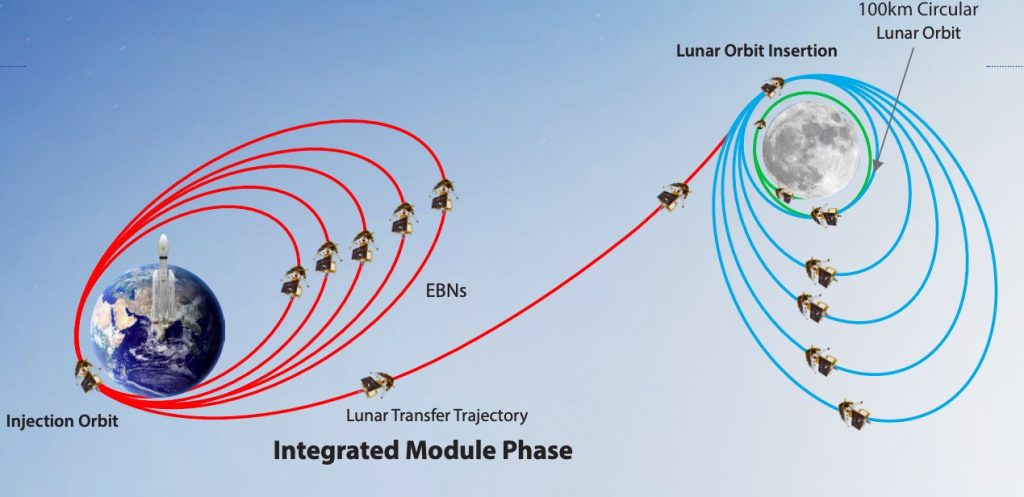
chandrayaan-3-moves-closer-to-the-moon-know-more-about-vikram-lander-pragyan-rover
The Indian Space Research Organisation (ISRO) has said that the Chandrayaan-3 mission will enter into the Moon’s sphere of influence on August 5 after leaving Earth earlier this week.
However, the success of this mission hinges on a critical phase – the lunar orbit insertion, a meticulously planned maneuver that reduces the speed of the spacecraft, allowing the moon’s gravitational field to pull it into a stable lunar orbit.
Chandrayaan 3 is India’s ambitious moon mission, launched from the Earth on July 14. It is expected to land on the moon on August 23.
Function of Vikram Lander
The lander and rover’s names have been taken from the last mission Chandrayaan-2. The lander is named after Dr Vikram A Sarabhai, the father of the Indian Space Programme.
It is designed to function for one lunar day, which is 14 days on the Earth and comes with a number of sensors to ensure a safe touchdown. It weighs about 1,749 kg including the rover. It is built to have side-mounted solar panels, which can generate 738 W power and will be engaged in exploring the lunar south pole.
According to ISRO, the Vikram lander consists of three payloads for its objectives. RAMBHA-LP – which will measure the near surface plasma (ions and electrons) density and its changes with time; ChaSTE or ‘Chandra’s Surface Thermophysical Experiment’ – which will carry out the measurements of thermal properties of the lunar surface near the polar region; and ILSA or ‘Instrument for Lunar Seismic Activity’ meant to measure seismicity around the landing site and delineating the structure of the lunar crust and mantle.
Function of Pragyan Rover
The robotic vehicle is named as ‘Pragyan’, which translates to ‘wisdom’ in Sanskrit. The six-wheeled vehicle has instruments configured with payloads to provide data related to the Moon’s surface.
It will gather data on the elemental composition of the atmosphere. It weighs 26 kgs and like the lander, has a mission life of one lunar day.
The two payloads on the rover are APXS or ‘Alpha Particle X-Ray Spectrometer’, which is meant to derive the elemental composition of the lunar surface; and the LIBS or ‘Laser Induced Breakdown Spectroscope’ will be carry out experiments to determine the elemental composition of chemicals elements such magnesium and aluminum, etc. of lunar soil and rocks around the lunar landing site.



